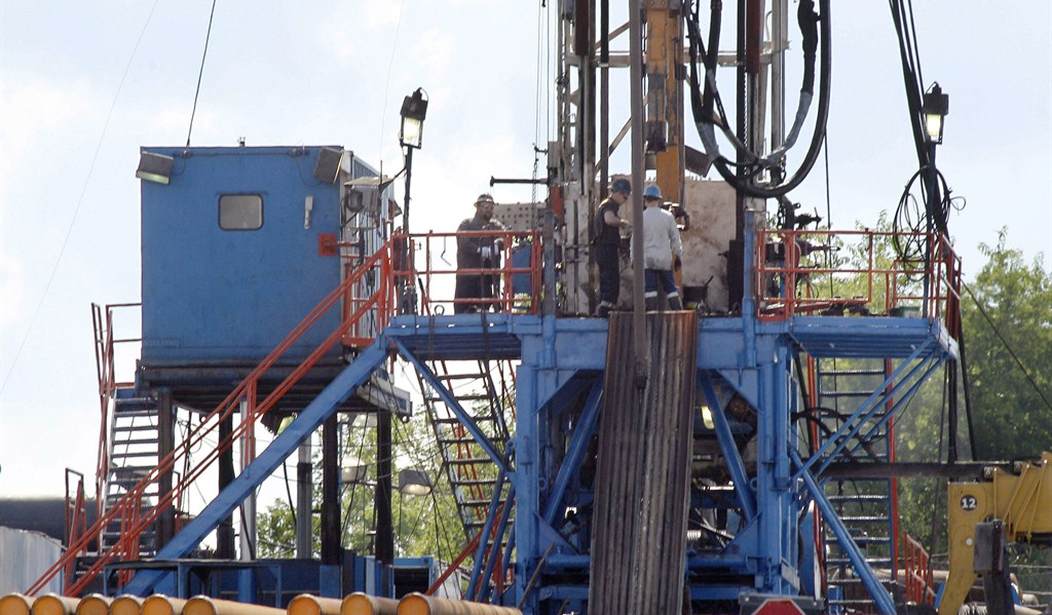Let the word go forth that fracking does not mess with your drinking water. In a new study of over 11,000 drinking wells, fracking wasn’t considered the reason for water contamination through methane creeping into the wells. At the same time, Science magazine noted that the authors of the new study are still disputing the validity of the results (via Science Magazine):
The new study of 11,309 drinking water wells in northeastern Pennsylvania concludes that background levels of methane in the water are unrelated to the location of hundreds of oil and gas wells that tap hydraulically fractured, or fracked, rock formations. The finding suggests that fracking operations are not significantly contributing to the leakage of methane from deep rock formations, where oil and gas are extracted, up to the shallower aquifers where well water is drawn.The result also calls into question prominent studies in 2011 and 2013 that did find a correlation in a nearby part of Pennsylvania. There, wells closer to fracking sites had higher levels of methane. Those studies, however, were based on just 60 and 141 domestic well samples, respectively.
“I would argue that [more than] 10,000 data points really tell a better story,” says hydrogeologist Donald Siegel of Syracuse University in New York, whose team published the new study online this month in Environmental Science & Technology. Chesapeake Energy Corp., which has large oil and gas stakes in Pennsylvania, supplied the researchers with the database, the largest of its kind, and also funded the work.
…
For all their disagreements, scientists on both sides of the fracking debate agree that it is very unlikely that microfracturing of rock formation itself contributes to the vertical migration of gases. The problem, they say, is with a minority of badly cased or cemented wells—they just disagree on how often this occurs. Siegel cites a 2014 study that found that just 0.24% of the thousands of wells in northeast Pennsylvania were ever given violation notices related to the migration of methane into groundwater. But Anthony Ingraffea, a civil engineer at Cornell University who is alarmed by the risks of fracking, says those violation notices are just the tip of the iceberg. He points to a study he led, published in PNAS [Proceedings of the National Academy of Sciences] in 2014, which found that 9% of unconventional wells drilled in northeast Pennsylvania since 2009 already have structural integrity issues. That problem will grow, he says, as wells age, and as tens of thousands of new wells are bored. “We’re just at the beginning,” Ingraffea says.
Recommended
So, it appears that the issue surrounding methane contamination of drinking wells mostly rests on poor construction of the well:
Siegel doesn’t deny that there have been problems with a few wells with poorly engineered steel casings or cracked and degraded cement walls designed to keep the boreholes from leaking. Such defective borehole walls can provide a conduit for the methane to move from the shale formation, more than a kilometer underground, to water wells just a hundred meters or so below the surface. But he says his study shows that it is an exceedingly rare issue. “We haven’t seen any evidence [of methane migration] other than the occasional local issue,” he says. “I think our paper, in my view, pretty much seals the deal.”
Regardless, the Obama administration has released new regulations on fracking, which is a method that’s used to extract natural gas since 1947.
Fracking, the Keystone pipeline, and the plan to cut greenhouse gas emissions by nearly 30 percent by 2025 are issues at the heart of job creation in Washington. For construction, the impact could be steep with 45,000 jobs being lost every year if the EPA continues to push their agenda with ozone standards (via PCA):
The Environmental Protection Agency’s (EPA) proposal to further tighten ozone standards could result in the loss of more than 45,000 construction jobs each year, slow the nation's economy, and impede vital infrastructure investments.…
PCA estimates that the cement industry alone would have compliance costs and plant closures that could lead to the loss of nearly 900 jobs. Cement manufacturing jobs are highly technical and well-paying, with an average wage of $77,481 per year. Most cement plants are located in small rural communities, so the impact would be felt disproportionately in those regions.
“A cement plant is vital to the economy of its community. When one is forced to close, the region loses jobs, it loses significant tax revenue for schools and public services, and it loses a strong supporter of local charities and civic activities,” said James Toscas, president and CEO at PCA. “Over the past four decades, the U.S. has virtually eliminated the severe air pollution that currently plagues some other countries. However, regulators have continued to tighten air quality standards, often with little or no proven health benefit. This has gotten to the point where our essential industries have struggled to meet current standards, incurred significant costs, and in some cases had to simply shut plants down.”
Most cement and concrete in the U.S is used for infrastructure. Higher costs for construction projects would mean that governments could afford fewer projects each year.

























Join the conversation as a VIP Member